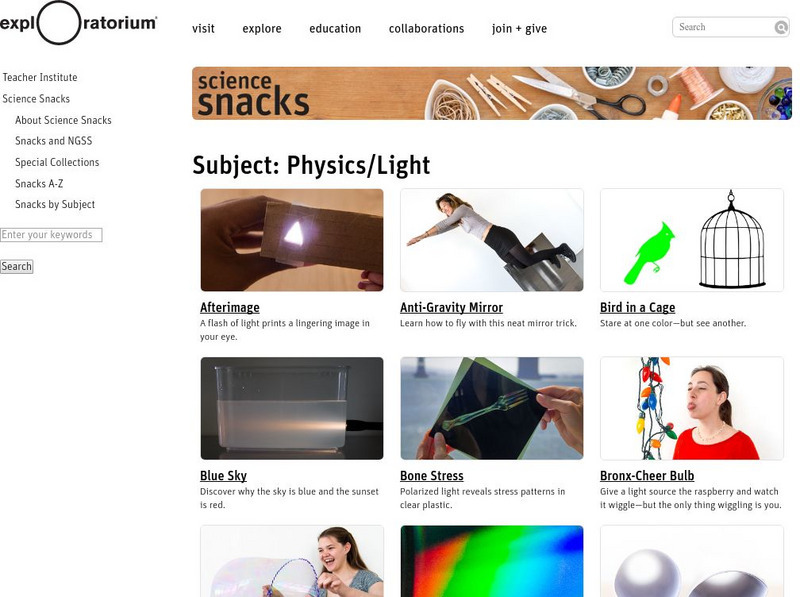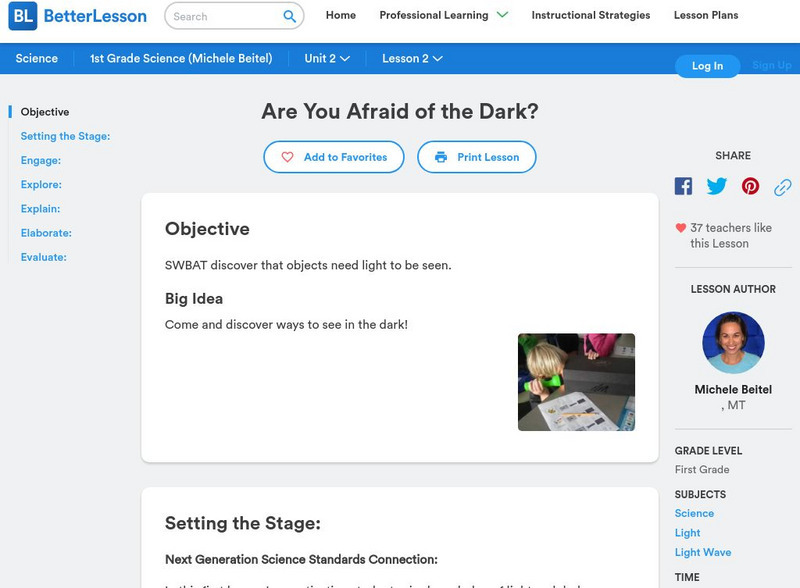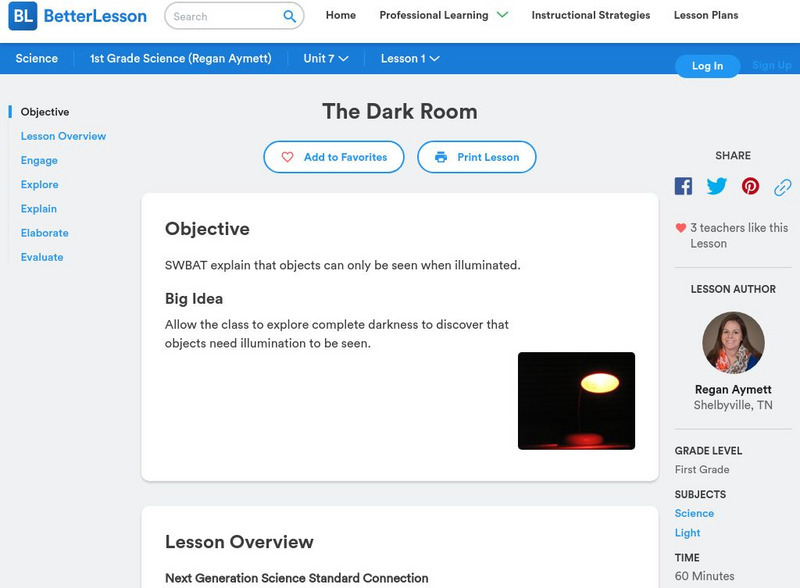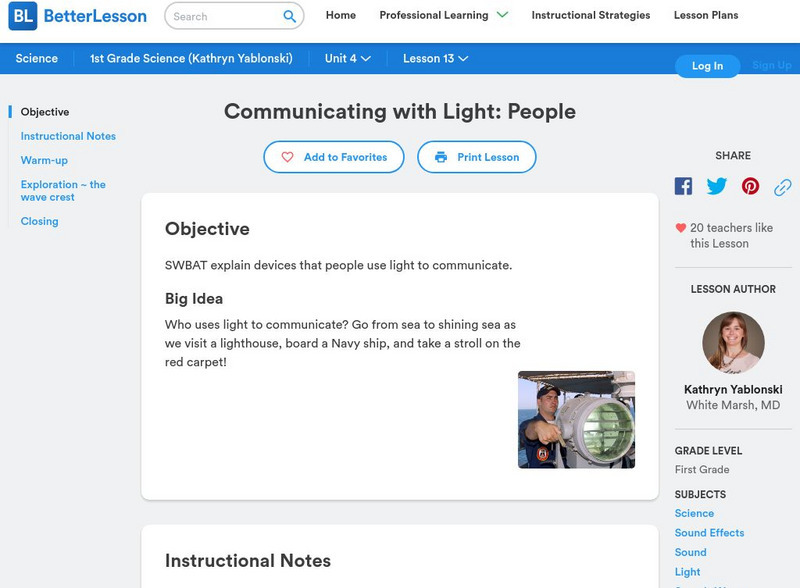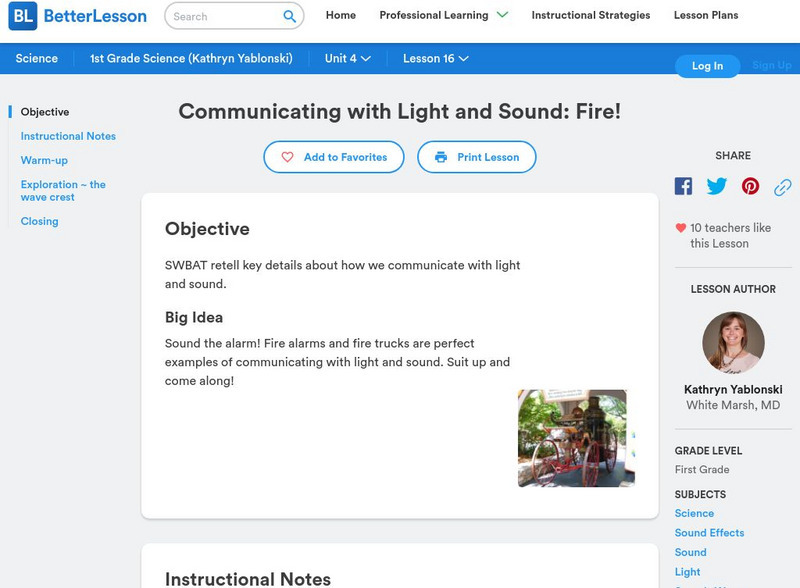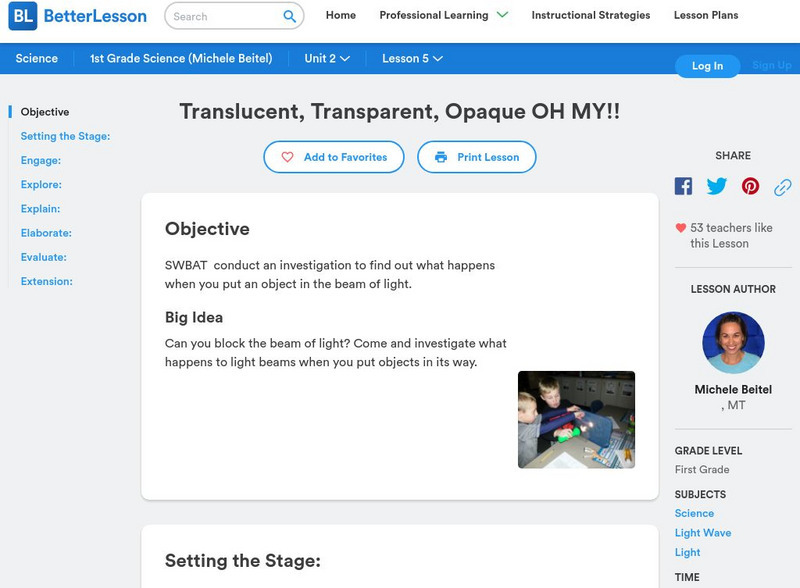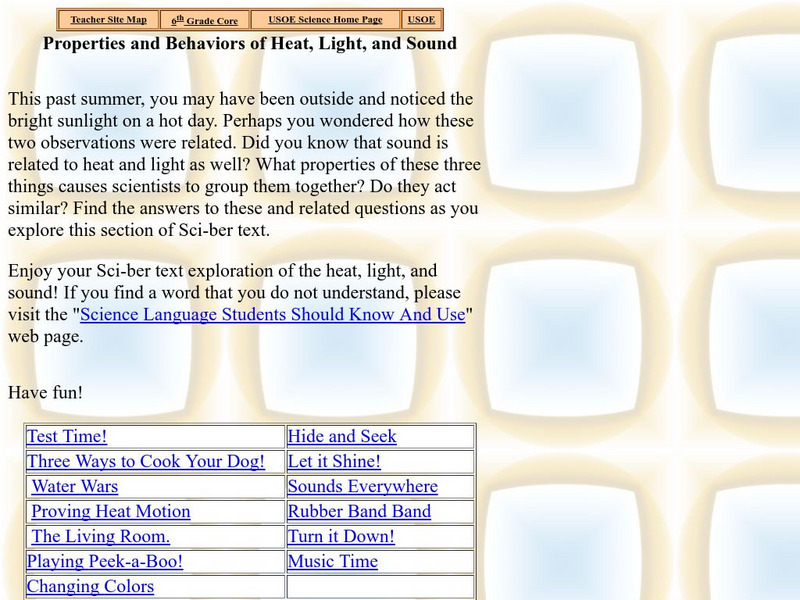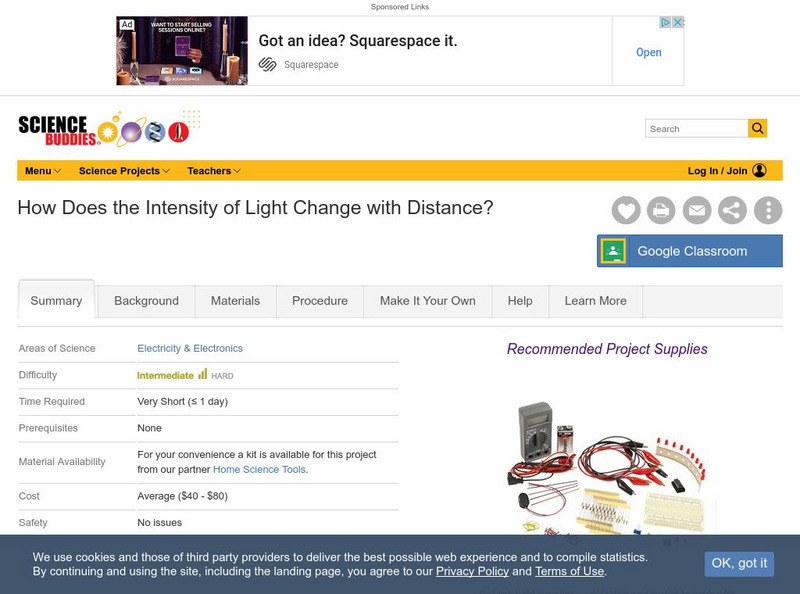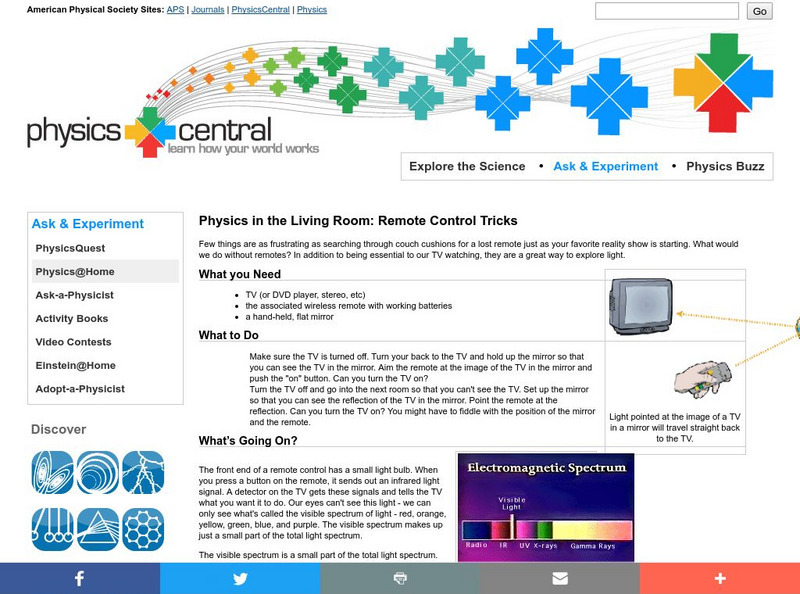Exploratorium
Exploratorium: Science Snacks: Physics/light
Here is a large collection of simple science class activities for understanding the physics of light.
TeachEngineering
Teach Engineering: Stations of Light
Student groups rotate through four stations to examine light energy behavior: refraction, magnification, prisms and polarization. They see how a beam of light is refracted (bent) through various transparent mediums. While learning how a...
NASA
Nasa: Optics: Light, Color, and Their Uses
Download this Educators Guide to light, color, and their uses. Choose from different activities using lenses, prisms, hidden messages, periscopes, and kaleidoscopes
Physics Classroom
The Physics Classroom: Wavelike Behaviors of Light
How light waves demonstrate their wave nature by reflection, refraction, and diffraction.
Physics Classroom
The Physics Classroom: Light Waves and Color
The behavior of light waves is introduced and discussed. Also, polarization, color, diffraction, and interference are introduced and discussed thoroughly as supporting evidence of the wave nature of light.
University of Colorado
University of Colorado: Physics 2000: Electromagnetic Waves
Using a student-teacher dialogue format, this page discusses the nature of light as an electromagnetic wave and the electromagnetic spectrum.
Globio
Glossopedia: Light
Light is a form of energy. We see it in many different forms all around us. It's the sunlight that pours through your bedroom window and wakes you up. Images and in-depth information on light can all be accessed in this article.
Better Lesson
Better Lesson: Are You Afraid of the Dark?
Come and discover ways to see in the dark! Students will conduct an investigation on light and dark. The investigation will allow students to gather evidence on how items illuminate. Using cause and effect, the students will demonstrate...
Better Lesson
Better Lesson: The Dark Room
This instructional activity allows the class to explore complete darkness to discover that objects need illumination to be seen. Students will make predictions, plan an investigation, and carry out their experiment in the classroom.
Better Lesson
Better Lesson: Communicating With Light: People
Who uses light to communicate? Go from sea to shining sea as we visit a lighthouse, board a Navy ship, and take a stroll on the red carpet! Students will investigate different ways of communicating with light and at the end of the lesson...
Better Lesson
Better Lesson: Communicating With Light and Sound: Fire!
Sound the alarm! Fire alarms and fire trucks are perfect examples of communicating with light and sound. Students will begin to understand the engineering principles behind why fire alarms and fire engines use both light and sound to...
Better Lesson
Better Lesson: Translucent, Transparent, Opaque Oh My!!
Can you block the beam of light? Young scholars will investigate what happens to light beams when you put objects in its way. These tests will allow them to learn new vocabulary (translucent, transparent, opaque) and discover how these...
NASA
Nasa: Optics: Light, Color, and Their Uses
Download this Educators Guide to light, color, and their uses. Choose from different activities using lenses, prisms, hidden messages, periscopes, and kaleidoscopes
PBS
Pbs Learning Media: Einstein: How Smart Was He?
This essay from the NOVA Web site explores the impact Einstein made on physics and most everything we know about the cosmos.
Utah State Office of Education
Utah Science: Properties and Behaviors of Heat, Light and Sound
How can scientists lump heat, light and sound together when investigating properties and behaviors? This learning module will address that question through a series of activities.
Science Buddies
Science Buddies: How Does the Intensity of Light Change With Distance?
How far would you have to travel so that the light of the full sun would provide "daylight" no brighter than twilight on Earth? This project describes a method to verify the inverse square law: how light, sound, electrical signals, and...
PBS
Pbs Learning Media: Mechanical Waves
Learn about mechanical waves, which transfers energy from one place to another through liquids, gases and solids, with this interactive lesson.
PBS
Pbs Learning Media: Light Waves: Interactive Lesson
Light is all around you, with wavelengths bigger than mountains and smaller than atoms. Learn about light waves, and the ways in which light interacts with matter, with this lesson plan.
American Museum of Natural History
American Museum of Natural History: Play With Color and Light
See what happens when you mix different colors of lights.
Discovery Education
Discovery Education: 3 M Young Scientist Lab: Triboluminescence
Detectable flashes of light are released as wintergreen-flavored candies are crushed in darkness.
Physics Central
Physics Central: Physics in the Living Room: Remote Control Tricks
An easy experiment through which students learn about light rays and the electromagnetic spectrum. Requires a TV, its remote, and a hand-held, flat mirror.
Physics Central
Physics Central: Physics in the Snow: Snowy Colors
A simple experiment through which students observe the connection between color and heat and prove that dark-colored objects and light-colored objects heat at different rates, even when exposed to the same heat or light source.
Exploratorium
Exploratorium: Bubbularium
What colors do you see in a bubble? Why do you see colors in a bubble? Use this site to find out the answer to these questions with this easy experiment.
Georgia State University
Georgia State University: Hyper Physics: Wave Motion
Two wave graphs depicting a sine wave and relating the various characteristics (wavelength, amplitude, frequency, and period) of a wave to each other. The site includes an interactive JavaScript form in which the visitor enters one...


